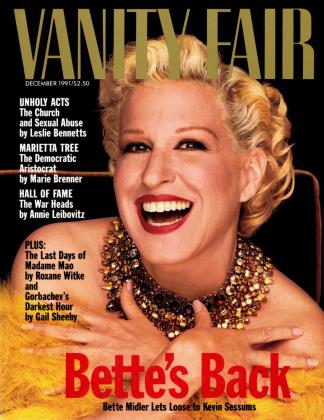Sign In to Your Account
Subscribers have complete access to the archive.
Sign In Not a Subscriber?Join NowEditor's Letter
Mondo Marietta
n a period when politics has been debauched by smear and vendetta, and high society's watchword has been "If you're not indicted, you're not invited,'' Vanity Fair celebrates a life of grace. Marietta Tree, who died last August at the age of seventy-four, never had any need to work. She might have been merely a bold-type figure in the Suzy column, the dazzling blonde daughter of the Boston-Brahmin Peabody and Parkman clans who threw one of the first great balls of postwar England, attended by Prince Philip and Princess Elizabeth among a galaxy of transatlantic titles. Instead, she rebelled against her family and deployed her natural good fortune to make a mark as a crusader. She was a high-spirited and tireless activist who, as an early civil-rights campaigner, railed against "apartheid in America"; served as a New York State committeewoman and worked on a draft of a new state constitution; became a passionate campaigner for Adlai Stevenson; and co-authored the 1960 plank on civil rights for John F. Kennedy, who made her his human-rights representative at the United Nations. But the roll call of her public service does not explain the subtle power of Marietta Tree. She was an intoxicating
mix of high life and high-mindedness. She managed to be serious without being earnest. She was glamorous but not frivolous. Her true milieu was her peach drawing room on Sutton Place, but her parties were nothing like those of the eighties power hostesses whose guests heavied around swapping deals and real-estate prices. Her style was to assemble a mixed bag of diplomats, polemicists, writers, bankers, social workers, and the odd overseas boffin who wandered in looking rather dazed, and somehow weave them into a social fabric that was at once warm and sparkling.
Marietta once asked Marie Brenner, "What do I have to do not to be called a socialite?" Brenner's vivid and thoughtful profile on page 210 shows how a remarkable woman escaped a stereotype and enriched the life of New York.
Editor in chief
 View Full Issue
View Full Issue












Subscribers have complete access to the archive.
Sign In Not a Subscriber?Join Now